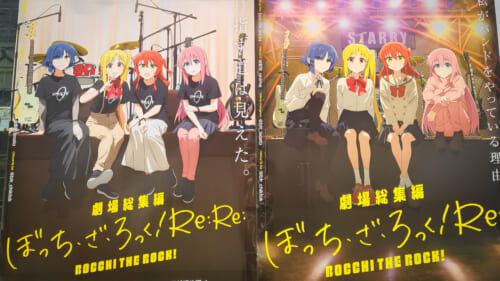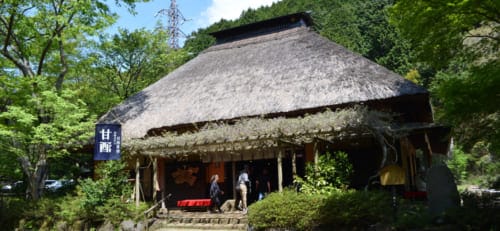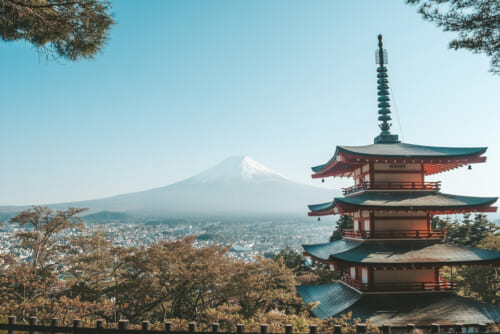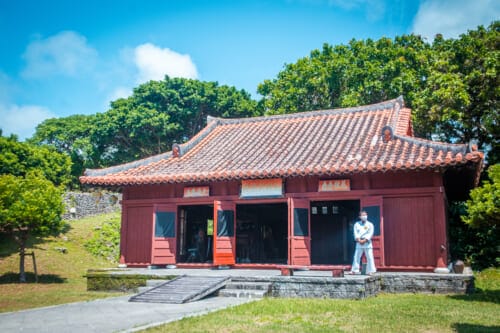When you first travel to Tokyo and gradually comprehend the city’s layout, you’ll realize you’re in the midst of a boundless metropolis. Despite its vastness, however, many visitors stick to conventionally touristy spots, from the traditional neighborhood of Asakusa to the modern and bustling Shinjuku, overlooking non-touristy local spots that are, best of all, not overcrowded. Tokyo has numerous facets and faces, and today, I’ll take you to two underrated neighborhoods in Tokyo: Ogikubo and Nishi-Ogikubo.
On my first trip to Tokyo, I visited the must-see attractions recommended by every guide. At the same time, I also fell in love with some off-the-beaten-path areas, such as the serene and natural oasis of Oji, the bustling local neighborhood of Akabane, and the summer festival hotspot of Koenji, among others. Now, as a Tokyo resident, I have far better insight into Tokyo’s underrated, walkable neighborhoods. Today, I’ll share two around the JR Chuo Line, which is filled with history, tranquility, and many restaurants to fill your stomach. Welcome to Ogikubo and Nishi-Ogikubo!
Ogikubo: A Fusion of Nature, Ramen, and Anime
Ogikubo (荻窪), a neighborhood which is only a 25-minute train journey from Tokyo Station, offers varied gastronomy, relaxing natural areas, and even a place for anime lovers.
A Free Anime-Lovers Spot at Suginami Animation Museum
Are you a fan of anime? If so, let’s kick off our Ogikubo itinerary at Tokyo Polytechnic University and visit the free Suginami Animation Museum (東京工芸大学 杉並アニメーションミュージアム), a seven-minute bus ride from Nishi-Ogikubo Station, or a 20-minute walk from Ogikubo Station. At the museum, you can explore the history of anime and learn about its creation process through its permanent exhibition. In addition to viewing, you can also put your skills to the test in a DIY area where you can create your own character and record your voice as if you were a professional voice actor.
One of my favorite areas was the small library, which has a great collection of anime-related books, manga, and DVDs. During my visit, I was excited to find a special section dedicated to Doremi, one of the anime series I enjoyed as a child. It was a nostalgic experience that made me happy. Although taking pictures was not allowed, I still enjoyed reminiscing about my favorite childhood anime and other anime series.
 Tokyo Polytechnic University Suginami Animation Museum
Tokyo Polytechnic University Suginami Animation Museum
MUSEUM- Japan, 〒167-0043 Tokyo, Suginami City, Kamiogi, 3 Chome−29−5 杉並会館
- ★★★★☆
Enjoy the Seasonal Japanese-style Garden at Otaguro Park
After indulging in your anime fix, it’s time to head outdoors and explore the nature of Ogikubo. Otaguro Park (杉並区立大田黒公園) may be small, but it makes up for it with elements that complete a serene traditional Japan experience: seasonal nature, a pond full of koi fish, and a traditional tearoom. Once owned by the music critic Motoo Otaguro, it is now a public space. It’s also a quick 10-minute walk from the south exit of Ogikubo Station.
The intensity of the colors in each season, especially the autumn leaves, never fails to amaze me. Having seen this park in all seasons, I can confidently say each season is worth visiting. The dense vegetation in this small park ensures brightness even during winter. Just a heads up, this park closes at 5pm, so make sure to add it to your schedule before it closes.
 Otaguro Park
Otaguro Park
PARK- 3 Chome-33-12 Ogikubo, Suginami City, Tokyo 167-0051, Japan
- ★★★★☆
Sakura Cherry Blossom Viewing at Zenpukuji River Park
If Otaguro Park isn’t enough nature for you, head up to Zenpukuji River Park (都立善福寺川緑地), about a 25-min walk from Otaguro Park, one of the largest parks in the Suginami ward. The best time to enjoy this park is during the cherry blossom season when a long riverside flourishes with sakura trees. Since discovering this sakura spot, I have visited here yearly to do my hanami sakura viewing. It’s local and, best of all, quiet — a rarity for a sakura destination in Tokyo.
Visit the Birthplace of Tokyo-style Ramen
If you ask anyone who has visited or knows about Ogikubo, they will inevitably bring up ramen. This is for good reason: Ogikubo is the birthplace of Tokyo-style ramen, made using chicken and fish stock with soy sauce. Consequently, numerous ramen shops are available, each offering their own distinctive take on the beloved dish. If you’re a ramen lover but don’t have time to travel around Tokyo to try them all, come to Ogikubo and sample as many flavors as your tastebuds (and stomach) can handle.
Take the north exit to find the Ogikubo Ginza Street area and Kyokai Dori, where you’ll find my three favorite ramen shops: Neiroya (らーめんとこおりのおやつ ねいろ屋), a fish ramen shop with shaved ice; Hakodate Shio Ramen Goryokaku (函館塩ラーメン 五稜郭), serving fish ramen with seaweed toppings; and my favorite, Narukami (鳴神), which offers irresistibly delicious and reasonably priced chicken ramen soup.
If you are not into ramen, don’t worry. Ogikubo offers a wide variety of restaurants, and the nightlife is both fun and relaxed. From izakaya and shabu-shabu to sushi restaurants and hamburger joints, consider having dinner here to avoid the never-ending lines in Shinjuku.
 Neiroya Ogikubo
Neiroya Ogikubo
RESTAURANT- 3 Chome-6-24 Amanuma, Suginami City, Tokyo 167-0032, Japan
- ★★★☆☆
 Hakodate Shio Rāmen Goryōkaku
Hakodate Shio Rāmen Goryōkaku
RESTAURANT- 3 Chome-28-7 Amanuma, Suginami City, Tokyo 167-0032, Japan
- ★★★★☆
 Narukami
Narukami
RESTAURANT- 3 Chome-4-11 Amanuma, Suginami City, Tokyo 167-0032, Japan
- ★★★★☆
Nishi-Ogikubo: For All The Vintage Lovers Out There
In the 1960s, the counterculture movement transformed Nishi-Ogikubo (西荻窪), also known as Nishi-Ogi, into a trendy neighborhood of antique shops, small art exhibitions, and charming cafés. If you prefer visiting local and charming shops over big shopping centers, be sure to add this area to your travel list.
Go Antique Shopping in Nishi-Ogikubo
If you walk five minutes from the northern exit of Nishi-Ogikubo Station, you will find yourself in a world of secondhand shops. This antique neighborhood has numerous bookshops, second-hand clothing stores, and retro-themed shops offering Japanese and Western products. Among the long list of shops, don’t miss Antiques Jikoh, Ototoharu, and Kidoairaku.
 Antiques Jikoh
Antiques Jikoh
FURNITURE STORE- Japan, 〒167-0042 Tokyo, Suginami City, Nishiogikita, 4 Chome−8−8 アビタシオン西荻
- ★★★☆☆
 ototoharu;
ototoharu;
CLOTHING STORE- 4 Chome-5-28 Nishiogikita, Suginami City, Tokyo 167-0042, Japan
- ★★★★☆
Visit Charming Cafés and Local Restaurants
After exploring art galleries and vintage shops, you may want to take a break at one of the many cafés or restaurants in Nishi-Ogikubo. You have many dining options, from traditional Japanese and modern restaurants to Italian, Vietnamese, and other cultural cuisines. With so many choices, you’ll never get tired of dining in Nishi-Ogikubo.
If you prefer dinner, there are plenty of izakaya and cozy bars where you can enjoy a drink while listening to live music. Don’t miss Yanagi Koji (柳小路), a lively yokocho (alleyway) street where you’ll be warmly welcomed by the locals.
Enjoy the Floral Festivities at Zenpukuji Park
After enjoying shopping and dining, it’s time to unwind at Zenpukuji Park (都立善福寺公園). A 20-minute walk from Nishi-Ogikubo Station, passing through the residential area of Nishi-Ogi, will lead you to this unexpected natural oasis.
Enjoy the seasonal beauty of cherry blossoms, azaleas, and momiji autumn leaves, as well as the wildlife around this twin-pond park. Nishi-Ogi is a popular local park for families and elderly people, so take a leisurely stroll to experience Japanese daily life.
 Zenpukuji Park
Zenpukuji Park
PARK- 3 Chome-9-10 Zenpukuji, Suginami City, Tokyo 167-0041, Japan
- ★★★★☆
How to Get to Ogikubo and Nishi-Ogikubo
If you are staying in central Tokyo, you’re in luck. You can easily reach them by taking the Chuo Line from Tokyo Station or Shinjuku Station, the Chuo Sobu Line from Akihabara, Yoyogi, or Shinjuku, or the Marunouchi Line to Ogikubo. Once you’re there, all the places mentioned above are within walking distance.
Next time you visit Tokyo, I highly recommend exploring these areas. You’ll experience the local Japanese lifestyle without the crowds and understand Tokyo’s diverse nature, including its quiet, local side.












No Comments yet!